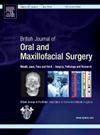三十年的经验和当前的趋势在涎石症的管理:叙述回顾。
IF 1.7
4区 医学
Q3 DENTISTRY, ORAL SURGERY & MEDICINE
British Journal of Oral & Maxillofacial Surgery
Pub Date : 2025-05-01
DOI:10.1016/j.bjoms.2025.02.011
引用次数: 0
摘要
目前涎石症的治疗趋势包括在鉴别诊断的帮助下进行正确的诊断。锥束计算机断层扫描可能是一个很好的选择,以检测唾液石,因为它比超声更敏感。医生应该收集有关结石的准确信息,包括结石的确切位置,结石的大小和体积,以及给定病例中结石的数量。对于下颌下结石,结石的位置相对于下颌骨的下缘和下颌骨的下缘的方向几乎以地理方式创造了坐标系统。下一步是管理计划,适当的手术方法可以从一个全面的可用技术列表中选择。如果不可能通过鼻腔内镜切除结石,我们可以选择内镜辅助、超声引导或无辅助的口腔内手术、体外冲击波碎石术(ESWL)、ESWL联合鼻腔内镜和内镜辅助的导管拉伸术。必须采取措施避免或减少术后并发症。在过去的一百年里,我们对涎石症的知识、技能、诊断和手术方法的发展令人印象深刻。然而,仍有进一步改进的空间。在诊断、结石评估和手术方法方面的一些问题需要进一步的研究。本文章由计算机程序翻译,如有差异,请以英文原文为准。
Thirty years of experience and current trends in the management of sialolithiasis: a narrative review
Current trends in the management of sialolithiasis include a proper diagnosis with the help of a differential diagnosis. Cone beam computed tomography may be a good choice for detecting sialoliths because it is more sensitive than sonography. A practitioner should collect precise information about the stone in question, which includes the exact location of the calculus, its size and volume, and the number of calculi in a given case. For submandibular calculi, the orientation of the stone’s location against the gonion and the inferior edge of the mandible creates the system of coordinates almost in a geographical fashion. The next step is management planning, and a proper surgical approach may be selected from a comprehensive list of available techniques. If the sialoendoscopic removal of calculi via ducts is impossible, endoscopy-assisted, ultrasound (US)-guided, or unassisted intraoral surgery, extracorporeal shock-wave lithotripsy (ESWL), a combination of the ESWL with the sialoendoscopy, and endoscopy-assisted ductal stretching procedure are our options. Measures must be taken to avoid or minimise postsurgical complications. The development of our knowledge, skills, diagnostic arsenal, and surgical approaches to sialolithiasis cases over the last hundred years is impressive. However, there is still room for further improvement. Some problems in diagnostics, calculus assessment, and surgical approaches require additional research.
求助全文
通过发布文献求助,成功后即可免费获取论文全文。
去求助
来源期刊
CiteScore
3.60
自引率
16.70%
发文量
256
审稿时长
6 months
期刊介绍:
Journal of the British Association of Oral and Maxillofacial Surgeons:
• Leading articles on all aspects of surgery in the oro-facial and head and neck region
• One of the largest circulations of any international journal in this field
• Dedicated to enhancing surgical expertise.

 求助内容:
求助内容: 应助结果提醒方式:
应助结果提醒方式:


